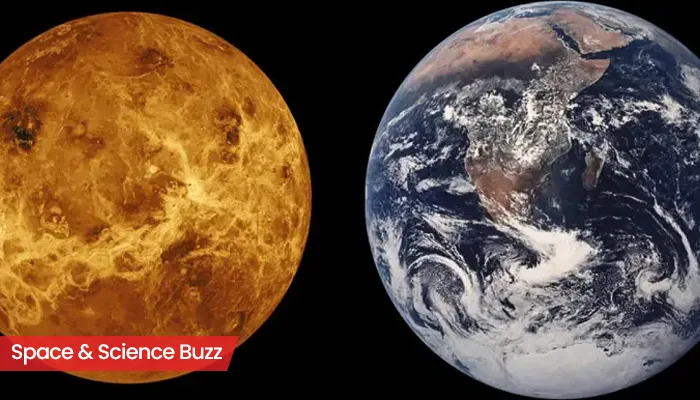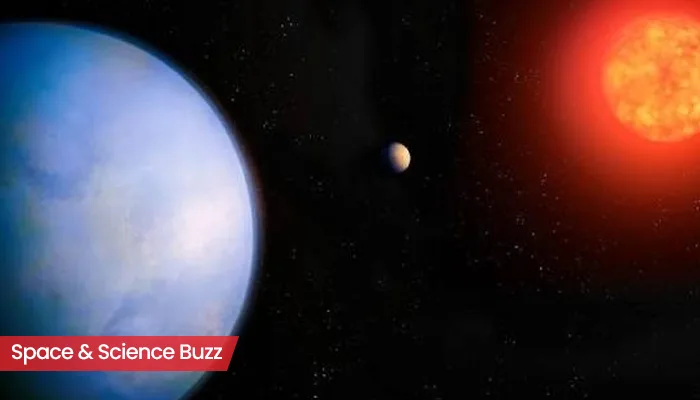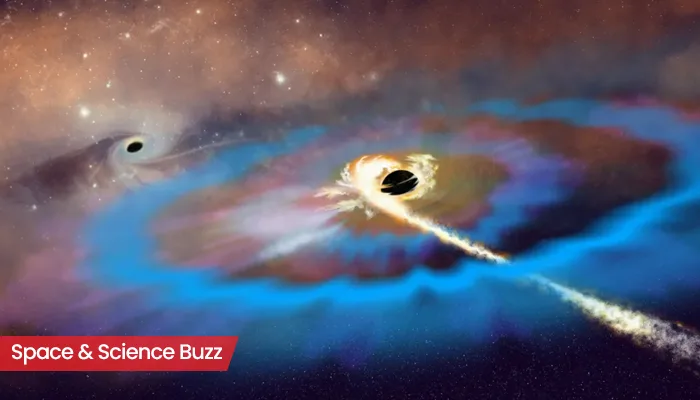
Here are today’s most important updates from the realm of Science and Space.
Cosmic Voyage: US Naval Officer Unlocks Space Mystery with Hubble
An aspiring naval officer named Olivia Achenbach from the United States Naval Academy has unveiled surprising characteristics of one quasar, J0742+2704, using NASA’s Hubble Space Telescope. Quasars are distant galaxies that host supermassive black holes surrounded by hot disks of gas capable of emitting powerful jets. Achenbach's discovery, made during a four-week internship, revealed a distinct spiral shape. This finding is particularly significant as quasars are typically associated with older, massive galaxies that have undergone chaotic mergers and exhibit elliptical shapes. Meanwhile, Hubble’s images show signs of potential interaction with nearby galaxies. These findings contribute to the origins of quasar jets, which play a crucial role in galaxy evolution by suppressing star formation.
Mystery of the Deep: Pacific Ocean Reveals Impossible Sunken World
🌍 Breaking Discovery Beneath the Pacific! Scientists uncover a "lost world" of ancient tectonic remnants buried 900-1200 km deep. Using cutting-edge seismic imaging (FWI), they found anomalies far from subduction zones, challenging Earth's geological history. Could these be… pic.twitter.com/fsQYdbsgbG
— Jeremy Martinus (@JeremyMartinus) January 14, 2025
(Credit - X/@JeremyMartinus)
Geophysicists have made a groundbreaking discovery regarding the Earth's interior, revealing unexpected remnants of submerged tectonic plates in locations far from traditional plate boundaries. Scientists from ETH Zurich and the California Institute of Technology utilised advanced seismic imaging techniques to make shocking discoveries. The biggest surprise was in a zone under the western Pacific. Theoretically, there should not be any old plate fragments, but their occurance led scientists investigate about the origin and nature of these structures. Some say they may be ancient, silica-rich pockets left over from the early mantle. Others suggest they might be iron-rich accumulations that have drifted over billions of years. This uncertainty suggests a more diverse range of compositions in the Earth’s mantle than previously understood.
Eerie Discovery: NASA Satellites Spot Ghost Island in the Caspian Sea
Satellites Spot a “Ghost” Island
— State_of_Mind (@StateofMind_02) January 10, 2025
A mud volcano near Azerbaijan formed a 400-meter-wide island in early 2023, visible by February 14, with sediment plumes observed.
By late 2024, only a small part of Kumani Bank remained above water, per geologist Mark Tingay. This site has… pic.twitter.com/iE9BvRDSda
(Credit - X/@StateofMind_02)
A transient “ghost island", born from a mud volcano eruption in the Caspian Sea, has captivated researchers. The island emerged in early 2023, only to recede into the sea by the end of 2024. According to NASA’s Earth Observatory, the island was a result of the powerful eruption of the Kumani Bank mud volcano, which lies about 25 kilometers (15 miles) off the eastern coast of Azerbaijan. Since its first recorded eruption in 1861, Kumani Bank has erupted numerous times, each creating islands of varying sizes that often disappeared within days or months. Azerbaijan is home to the highest concentration of mud volcanoes on Earth, with more than 300 of them scattered across the eastern region and offshore in the Caspian Sea.
Webb Telescope Unveils Dynamic Carbon Dust Shells in Star System
Astronomers using #NASAWebb identified two stars that generate carbon-rich dust in our Milky Way. When the stars in Wolf-Rayet 140 swing by one another on their elongated orbits, their winds collide and produce dust that expands outward: https://t.co/2o8GNIzSEp #AAS245 pic.twitter.com/DfniLCLuTc
— Space Telescope Science Institute (@SpaceTelescope) January 13, 2025
(Credit - X/@SpaceTelescope)
NASA’s James Webb Space Telescope has examined one ongoing source of carbon-rich dust in our own Milky Way galaxy in greater detail: Wolf-Rayet 140, a system of two massive stars that follow a tight, elongated orbit. Webb’s latest observations show 17 dust shells shining in mid-infrared light that are expanding at regular intervals into the surrounding space. The telescope’s mid-infrared images detected shells that have persisted for more than 130 years. The researchers speculate that the stars will ultimately generate tens of thousands of dust shells over hundreds of thousands of years. Though no one can predict with any certainty what will happen, researchers are rooting for the black hole scenario.


.webp)
.WEBP)
.WEBP)
.webp)
.webp)


.webp)
.webp)
.webp)
